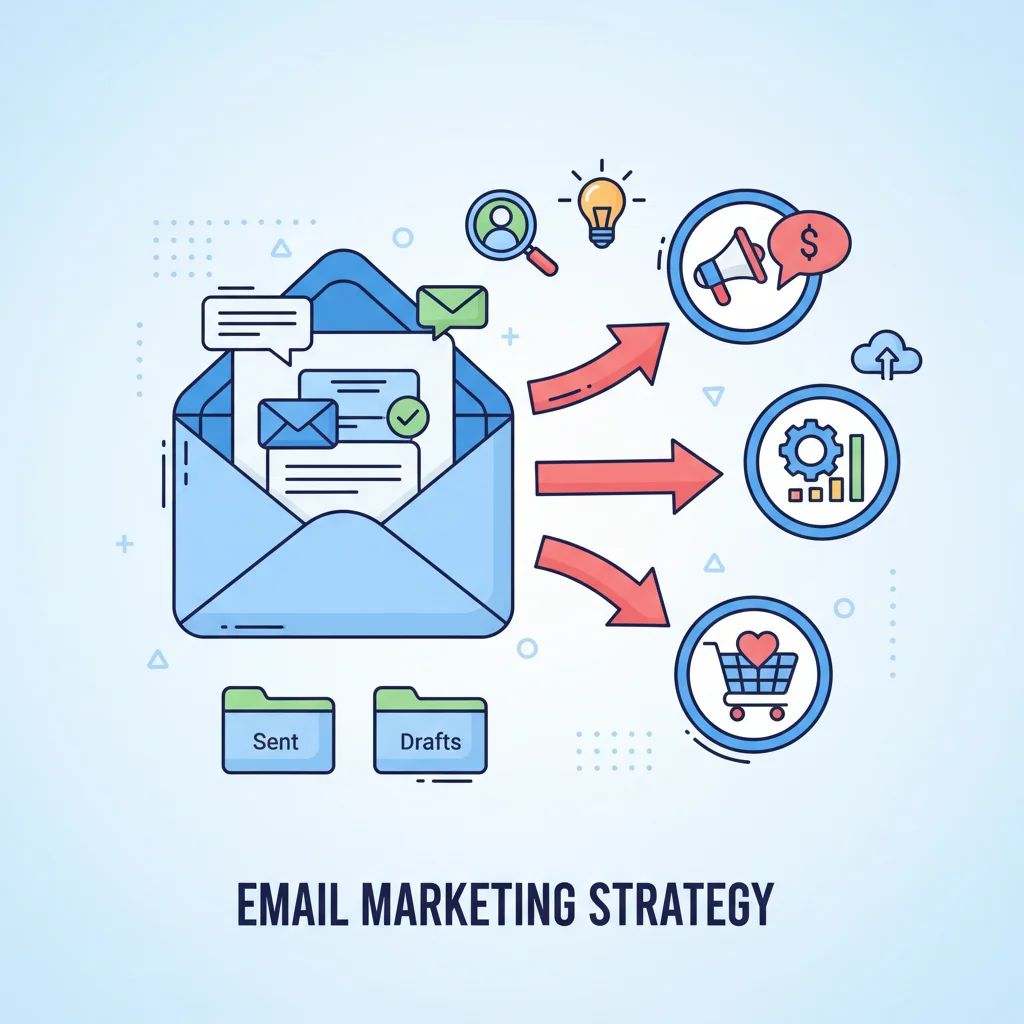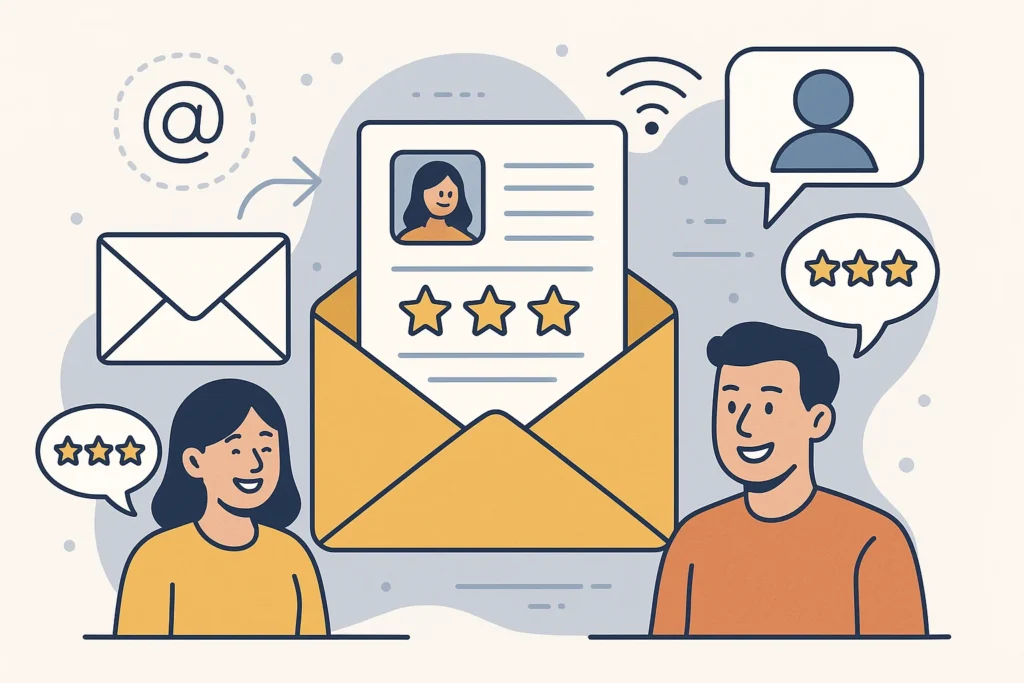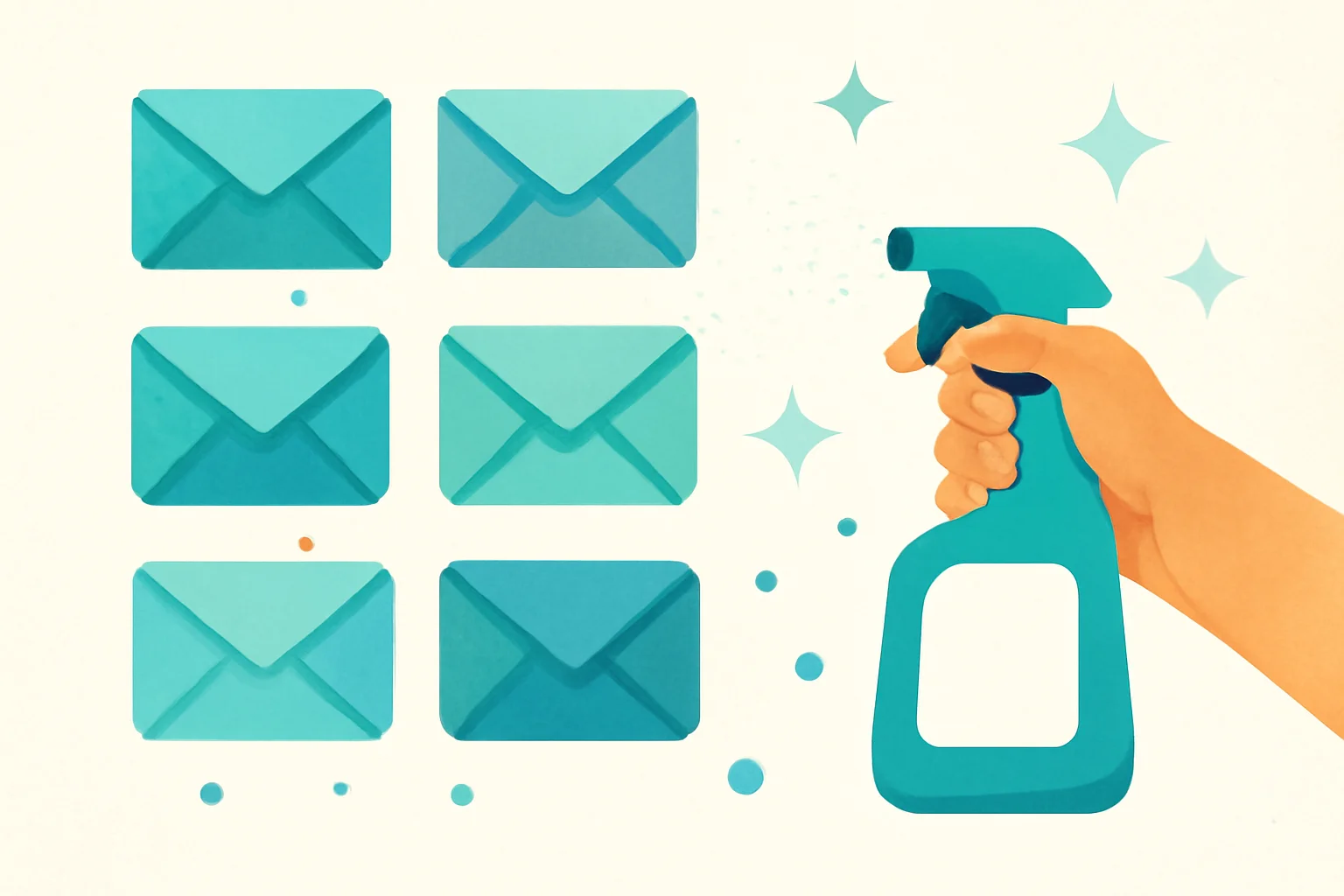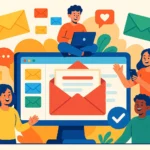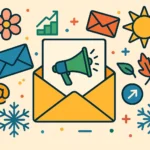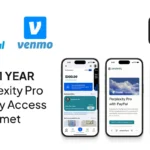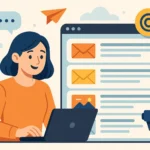Now Reading: 7 Methods to Re-engage Inactive Email Subscribers
-
01
7 Methods to Re-engage Inactive Email Subscribers
7 Methods to Re-engage Inactive Email Subscribers

What if I told you that the “dead” subscribers on your email list could be your biggest untapped revenue source? Most marketers focus exclusively on acquiring new subscribers while ignoring the gold mine of inactive contacts they already have. I’ve discovered that with the right re-engage inactive email subscribers methods, those silent subscribers can become your most valuable assets. The approach that changed everything for me might surprise you…
Key Takeaways
How to re-engage inactive email subscribers:
- Define inactivity clearly (typically 3-6 months without opens or clicks)
- Segment your inactive subscribers based on past behavior and engagement level
- Create targeted re-engagement campaigns with compelling subject lines and personalized content
- Offer incentives like exclusive discounts or valuable content to spark interest
- Clean your list by removing subscribers who remain unresponsive after multiple attempts
- Implement a win-back automation sequence to systematically reconnect with dormant contacts
- Test different approaches to discover what resonates with your specific audience
Identify And Segment Your Inactive Subscribers
Before you can re-engage anyone, you need to know exactly who’s inactive. This is where segmentation becomes your best friend.
Define Your Inactivity Criteria
Different businesses have different definitions of “inactive.” For a daily newsletter, someone who hasn’t engaged in two weeks might be considered inactive. For a quarterly product update, the timeline might be much longer.
I recommend creating at least three segments:
- Recently inactive (haven’t engaged in 1-3 months)
- Moderately inactive (haven’t engaged in 3-6 months)
- Chronically inactive (haven’t engaged in 6+ months)
This isn’t just about time periods, though. Look deeper into your data:
- Which campaigns did they last engage with?
- What content topics seemed to interest them before they went cold?
- Did they make purchases after subscribing, or never convert?
Most email platforms make this kind of segmentation pretty straightforward. In Mailchimp, for example, you can create segments based on campaign activity (or lack thereof). In ConvertKit, you can use automation rules to tag subscribers based on their engagement patterns.
Analyze Patterns And Possible Causes
Once you’ve identified your inactive subscribers, try to understand why they’ve disengaged. Common reasons include:
- Content that no longer resonates with their needs
- Too many emails (frequency fatigue)
- Not enough value in your communications
- Changed circumstances (they no longer need your product/service)
I once worked with a client who discovered their inactive subscribers were primarily people who had signed up during a specific promotion. The lesson? Those subscribers were interested in the deal, not necessarily the ongoing relationship. Understanding this helped us craft re-engagement messages that offered similar value.
Craft Compelling Re-engagement Campaigns
Now for the fun part-creating campaigns that will make those inactive subscribers sit up and take notice! Here are my favorite re-engage inactive email subscribers methods:
The “We Miss You” Email
Sometimes, the direct approach works best. A simple subject line like “We miss you!” or “It’s been a while…” can trigger curiosity. In the body of the email:
- Acknowledge their absence without guilt-tripping
- Remind them of the value they’re missing
- Include a clear call-to-action
Here’s a template I’ve used successfully:
“Subject: We miss you, [Name]!
Hey [Name],
I noticed you haven’t opened our emails lately. No judgment-my inbox gets crazy too!
But I wanted to make sure you’re not missing out on [specific value proposition, like “our weekly marketing tips” or “exclusive subscriber discounts”].
Is this still a good email for you? Just click the button below to let us know you’re still interested.
[Button: “Yep, Keep ‘Em Coming!”]
If we don’t hear from you, we’ll assume you’re busy living your best life and remove you from our list in two weeks.
Either way, thanks for being part of our journey!
[Your name]”
The Preference Update Request
Sometimes people disengage because your content isn’t relevant anymore. Give them control with a preference center:
- Ask what topics they’re interested in
- Let them choose email frequency
- Provide options for different types of communications
This approach shows respect for their inbox while giving you valuable data about their preferences.
The FOMO Campaign
Fear of missing out is powerful! Show inactive subscribers what they’ve been missing:
- Highlight your most popular recent content
- Showcase customer success stories
- Tease upcoming features or events
I once created a “While You Were Away…” campaign for a SaaS client that highlighted three major product updates with GIFs demonstrating each new feature. The open rate was 3x higher than their average for inactive subscribers!
The Incentive Offer
Sometimes people need a little extra motivation to re-engage. Consider offering:
- Exclusive discount codes
- Free shipping
- Bonus content
- Entry into a giveaway
Just be careful not to train subscribers to expect incentives for engagement. The goal is to remind them of your ongoing value, not to bribe them.
The Feedback Request
Ask directly why they’ve disengaged. This approach:
- Shows you value their opinion
- Provides insights to improve your email program
- Makes subscribers feel heard
A simple subject line like “Can you help us improve?” with a short survey can work wonders. I’ve seen response rates as high as 5% from otherwise inactive subscribers-and the feedback is gold.
Subject Lines That Wake Up Dormant Subscribers
Your re-engagement campaign is only as good as its subject line. If they don’t open the email, nothing else matters! Here are some subject line approaches that have worked well for me:
Direct And Honest
- “Are we breaking up?”
- “Is this goodbye?”
- “One last email before we part ways”
Curiosity-Driven
- “This might be why we lost touch…”
- “I’ve been wondering about you”
- “Something’s different about our emails…”
Value-Focused
- “We saved this [discount/resource/offer] for you”
- “What you’ve been missing (it’s not too late)”
- “Your exclusive re-subscriber benefits inside”
Humor
- “This awkward silence between us…”
- “Was it something we said? 😢”
- “Proof of life requested”
Pro tip: Test different subject lines with small batches of your inactive segment before sending to everyone. What works for one audience might flop with another.
Create Irresistible Re-engagement Content
Once you’ve got them to open your email, the content needs to deliver. Here are some content strategies that can help re-engage inactive email subscribers:
Remind Them Of Your Value
Clearly articulate what makes your emails worth reading. Have you:
- Helped subscribers solve specific problems?
- Provided exclusive insights or information?
- Offered special deals not available elsewhere?
- Built a community they might want to be part of?
Don’t assume they remember why they subscribed in the first place-tell them again!
Make It Personal
Generic emails rarely cut through the noise. Try:
- Referencing their specific history with your brand
- Mentioning their last interaction or purchase
- Using their name (but not in a creepy way)
- Writing in a conversational, one-to-one style
I once recovered nearly 15% of an inactive segment by sending emails that referenced the specific lead magnet each person had downloaded initially, with follow-up content directly related to that interest.
Showcase Your Best Content
If they’ve been inactive for months, they’ve missed your best stuff! Consider:
- A “greatest hits” email with links to your most popular content
- Before-and-after case studies showing impressive results
- Testimonials from active, engaged customers
Simplify Your Design
For re-engagement emails, sometimes less is more:
- Use plain-text or minimal design to feel more personal
- Focus on a single message or call-to-action
- Remove distracting navigation or secondary offers
I’ve found that re-engagement emails that look like they came from a real person (rather than a marketing department) often perform better.
Implement A Strategic Win-Back Sequence
One-off re-engagement emails can work, but a strategic sequence often performs better. Here’s a win-back automation flow I’ve used successfully:
Email 1: The Check-In
- Subject: “Are you still there, [Name]?”
- Content: Light-hearted acknowledgment of their absence, reminder of benefits
- CTA: “Click here to stay subscribed”
Email 2: The Value Proposition (3 days later, if no engagement)
- Subject: “What you’ve been missing…”
- Content: Highlight best content/offers from the past few months
- CTA: Invite them to check out a specific piece of valuable content
Email 3: The Preference Update (5 days later, if no engagement)
- Subject: “Help us get better for you”
- Content: Preference center link, options to change frequency or content topics
- CTA: Update preferences
Email 4: The Incentive (7 days later, if no engagement)
- Subject: “A special offer just for you”
- Content: Exclusive discount or content access
- CTA: Redeem offer
Email 5: The Final Notice (10 days later, if no engagement)
- Subject: “Is this goodbye?”
- Content: Clear statement that this is the last email unless they take action
- CTA: “Click to stay subscribed” (big, unmissable button)
This sequence gives inactive subscribers multiple opportunities to re-engage in different ways. Some will respond to the friendly check-in, others to the incentive, and some might only act when they realize they’re about to be removed.
Optimize Send Times And Frequency
When trying to re-engage inactive email subscribers, timing matters. Consider these strategies:
Test Different Days And Times
Your inactive subscribers might have changed their email habits. The time slot that worked when they first subscribed might not work now.
I recommend testing:
- Different days of the week
- Various times of day
- Weekdays vs. weekends
Some email platforms allow you to send based on each recipient’s time zone or even their personal open history, which can significantly boost engagement.
Adjust Frequency For Re-engagement
During your re-engagement campaign, you might want to:
- Reduce frequency to avoid overwhelming them
- Or increase frequency for a short, concentrated win-back effort
There’s no one-size-fits-all answer here. For a B2B audience that normally receives weekly emails, I might send a re-engagement sequence with just 2-3 emails over two weeks. For an e-commerce brand with a daily send schedule, a more intensive approach might work better.
Consider Seasonal Timing
Some periods are naturally better for re-engagement:
- New Year (resolution season)
- Back-to-school time
- Start of a new season
- Industry-specific timing (like tax season for financial services)
I once helped a fitness client run a hugely successful re-engagement campaign in early January, when health goals were top of mind for their audience.
Clean Your List When Necessary
Sometimes, you need to accept that some subscribers have moved on. After multiple re-engagement attempts with no response, it’s often best to remove these subscribers from your active list.
Benefits Of List Cleaning
Removing truly inactive subscribers can:
- Improve your deliverability rates
- Give you more accurate engagement metrics
- Reduce your email service costs
- Help you focus on subscribers who actually want to hear from you
The Sunset Policy Approach
Create a clear “sunset policy” for your email program:
- Define how long inactivity will be tolerated (e.g., 6 months)
- Determine how many re-engagement attempts you’ll make
- Decide whether to delete inactive subscribers or move them to a separate list
I recommend archiving rather than permanently deleting inactive subscribers. You never know when you might want to try one more re-engagement campaign with a fresh approach.
The Final Goodbye Email
Before removing subscribers, send one last “breaking up” email:
- Be direct about this being their last chance
- Remind them of what they’ll miss
- Make the “stay subscribed” button unmissable
- Consider adding humor to lighten the mood
Here’s a template that’s worked well:
“Subject: This is awkward, but…
Hey [Name],
We’ve been trying to get your attention, but it seems like our emails aren’t your thing anymore.
No hard feelings! But this is officially our last attempt to reach you.
If you want to keep receiving [benefit of your emails], just click the big blue button below. One click and we’re good!
[STAY SUBSCRIBED]
If we don’t hear from you, we’ll remove your email from our list, and this is the last message you’ll receive from us.
Either way, thanks for being with us this far!
[Your name]”
Test And Refine Your Approach
Like everything in email marketing, re-engagement isn’t a set-it-and-forget-it process. Continuous testing and refinement are crucial.
Elements To Test
- Subject lines: Test emotional vs. straightforward, questions vs. statements
- Send times: Morning vs. evening, weekday vs. weekend
- Content formats: Text-heavy vs. image-heavy, long vs. short
- Incentives: Discount amounts, content offers, free shipping
- Call-to-action language: “Stay subscribed” vs. “I want to stay” vs. “Keep the emails coming”
Measure The Right Metrics
When evaluating re-engagement campaigns, look beyond opens and clicks:
- Recovery rate: What percentage of inactive subscribers became active again?
- Sustained engagement: Are recovered subscribers staying engaged over time?
- Revenue from recovered subscribers: Are they converting to customers?
- List health metrics: Has your overall deliverability improved?
Learn From Both Success And Failure
Every re-engagement campaign provides valuable insights:
- Which segments responded best?
- What messaging resonated most strongly?
- What patterns emerged among those who re-engaged?
- What can you learn from those who remained inactive?
I once discovered that subscribers who initially came through a specific lead magnet were much more likely to re-engage when offered updated content on the same topic. This insight helped us create more targeted re-engagement campaigns and influenced our content strategy going forward.
Prevent Future Disengagement
The best way to handle inactive subscribers is to prevent them from becoming inactive in the first place! Here are some proactive strategies:
Set Expectations From The Start
- Create a compelling welcome sequence that reinforces the value of your emails
- Clearly communicate how often you’ll email and what content to expect
- Encourage subscribers to whitelist your email address
Monitor Engagement Early
- Watch for signs of declining engagement
- Reach out at the first signs of disengagement, not months later
- Use automation to identify and respond to engagement patterns
Regularly Ask For Feedback
- Send occasional surveys about your email content
- Include a “how are we doing?” link in your email footer
- Make it easy for subscribers to update their preferences
Keep Content Fresh And Relevant
- Regularly audit your email content for engagement
- Try new formats, topics, and approaches
- Personalize content based on subscriber behavior and preferences
Re-engaging inactive email subscribers isn’t just about recovering lost contacts-it’s about building a more responsive, engaged list for the long term. With these methods, you can transform those silent subscribers into some of your most valuable audience members. The key is persistence, creativity, and a genuine desire to provide value. Now go wake up those sleeping subscribers!


